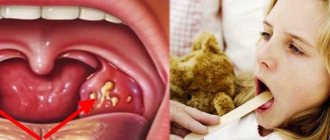Sleep paralysis is a temporary state of the body that occurs at the border between sleep and reality. It is manifested by the onset of muscle atonia before the transition to sleep, as well as the awakening of consciousness before muscle tone is restored. A synonym for the condition is the term “sleepy stupor.”
The state of sleepy stupor is not a very rare deviation. Most often, this trouble happens to patients suffering from irresistible daytime sleepiness (narcolepsy). Muscle paralysis or loss of tone is usually accompanied by strong hallucinations that frighten the person, to which he cannot react properly due to stupor.
What do the statistics show?
The question of what causes sleep paralysis is under study. According to general statistics, approximately 7% of the population has experienced sleep paralysis at least once during their life. Students are more susceptible to it (28.3%). It has been hypothesized that the nature of such muscle paralysis may be due to irregular sleep or prolonged exposure to stress.
Data obtained from a study of the health of students show that 75% of students who experienced a state of sleep paralysis had at least one case of hallucinations at this moment. About 10% of respondents reported a frequency of hallucinatory visions of 3 or more times. 90% of students who were in a state of sleep atony experienced a strong feeling of fear and horror when falling asleep.
This sleep disorder occurs in the fairer sex 1-2% more often than in the stronger sex. Since the difference is insignificant, it means that the risk of developing sleepy stupor does not depend on gender. Sleep paralysis can also occur in children.
Patients with psychiatric diagnoses usually suffer from insomnia atony: it developed in 31.9% of such patients. Among patients diagnosed with panic disorder syndrome, sleepy stupor occurred in 35%.
Symptomatic treatment
First of all, patients with narcolepsy are advised to lead a certain lifestyle:
- give up “heavy” foods, caffeine, alcohol, smoking;
- observe a sleep schedule - reduce daytime sleep, increase nighttime sleep, go to bed and get up at the same time;
- doing physical exercise;
- plan a schedule of your actions so that while performing certain actions (for example, driving a car) you are especially vigilant and careful. It is better to have someone nearby during this period.
To control sleep disturbances, drowsiness, and avoid hallucinations, the doctor prescribes certain medications to the patient - stimulants, antidepressants, etc. His recommendations should be strictly followed and any problem or change should be reported immediately.
Good news came out not long ago. Based on scientists’ assertion that one of the causes of narcolepsy is a lack of orexin in the brain (discussed above), a nasal spray containing it was developed. So far the drug has only been tested on monkeys, but after using it the animals were alert even with a lack of sleep. The military is interested in the development, but there is hope that it will reach the sick!
Behavioral therapy is also indicated. Family members of a person suffering from narcolepsy, as well as colleagues and superiors, should know about his illness - the attending physician should be the first to inform about this, and the patient himself should inform the rest. This makes it possible to avoid a lot of misunderstandings - those around you will understand the patient’s behavior and not think that he is deliberately shirking work, is lazy, becomes depressed, or suffers from a mental disorder.
Relatives will support the narcoleptic relative and help cope with the symptoms of the pathology. As for work, the employer, if possible, will create certain conditions if it is interested in such an employee. If not, then the patient will have to look for another source of income where his problem will not interfere with the performance of his official duties.
Parents of a child with such a disease should warn teachers about it. Teachers will definitely take measures to ensure that the student is not ridiculed, the educational process does not suffer, etc. The diagnosis will not be an obstacle to good performance and education.
Development mechanism
Sleep as a physiological process consists of two phases: slow and fast. First comes the slow phase, then the fast phase, characterized by a drop in skeletal muscle tone. Breathing cycles become more frequent and inhalations become shorter. Brain activity during sleep increases to the level characteristic of the waking state.
In the case of a sleep disorder, the sequence of processes is confused, so a person becomes conscious before muscle tone normalizes. A feeling of immobility appears - this is sleepy stupor (paralysis, muscle atony).
This can happen during the transition to sleep: REM sleep has already begun, but consciousness has not yet switched off. A sleeping person cannot take a deep breath (after all, in the REM sleep phase, short and frequent breaths are reflexively taken). There is a feeling of tightness in the chest.
The feeling that you can't move is a symptom that signals danger to the nervous system
In response, there is a huge release of neurotransmitters, as a result, the person experiences fear, anxiety, and hallucinations. It seems to him that he is gliding in the air, because the vestibular apparatus is working, but does not receive feedback from peripheral organs due to immobility.
Symptoms
Night paralysis is a condition in which a person exits the REM phase of sleep, but has not yet entered a period of wakefulness. The phenomenon combines physiological problems and a psychological disorder, accompanied by a number of symptoms:
- Complete immobility of the body, with the exception of the eyes;
- Syndrome of suffocation or heaviness on the chest;
- The apparent presence of third parties, accompanied by an auditory or visual hallucination;
- Fear turning into panic.
All these symptoms are combined in the false stages of the disease. Due to the strong pressure on the chest, the patient feels as if someone is sitting on him and trying to strangle him, which causes even greater fear and aggravates the situation.
Classification
Based on the time of occurrence of attacks (before waking up or during the period of falling asleep), sleepy stupor is divided into two types.
- Hypnagogic stupor. Characteristic of the moment of falling asleep. It is a rare occurrence. Caused by the onset of REM sleep before the loss of consciousness. Before going to bed, a person feels immobilized.
- Hypnopompic stupor. Develops at the moment of awakening. It is the most common type of this sleep disorder. Sleep paralysis is caused by the inclusion of consciousness while maintaining the low muscle tone inherent in the rapid phase of sleep. Such stupor is combined with vivid emotional shocks and fears that cannot be avoided.
What it is
Old witch syndrome or sleep paralysis is a condition in which there is sudden dysfunction of muscle tissue during sleep.
As a result, the person completely loses mobility. In the early stages of the disease, sleep paralysis occurs no more than once or twice a night. If you neglect treatment, then loss of mobility is observed up to 5 times during one rest. Each exacerbation is accompanied by a strong nervous shock - the person wakes up, along with which strong fear and even panic appears. In difficult cases, patients note the occurrence of hallucinations.
Many mystical stories associated with the appearance of ghosts and brownies in the middle of the night are told by people who have no idea about the existence of the problem, assuming that they are paralyzed by some higher or otherworldly forces. Meanwhile, sleep paralysis is a disease that requires treatment. Proper therapy can restore healthy sleep to the patient.
Causes of sleep paralysis
Sleep paralysis is based on a violation of the order of waking up (or falling asleep) and muscle atonia, characteristic of the REM sleep phase. The causes of the pathology have not been fully elucidated. Among the predisposing factors, 5 groups are distinguished.
Sleep disorders
Insomnia and irresistible sleepiness (narcolepsy) during the day are fraught with the development of other somnological disorders. Constant violations of the daily routine, chronic lack of sleep, and frequent and rapid changes in time zones act in the same way.
Psycho-emotional stress
Disorders of the circadian sleep-wake cycle can be caused by stress - acute or chronic. Patients suffering from sleep paralysis experience an increase in the number of attacks due to mental overload.
Toxic effects on the central nervous system
Long-term use of certain medications, substance abuse, drug use, alcohol, nicotine addiction is a chronic intake of toxic substances into the body, which has an adverse effect on the function of the central nervous system. As a result, the functioning of the nerve structures regulating the somnological cycle can quickly be disrupted.
Sleeping on your back
Sleeping on your side does not cause attacks of muscle atony. This connection between posture and the insomnia in question still has no explanation. Often a person who changes their sleeping position gets rid of sleep paralysis forever.
Sleep paralysis occurs mainly in people who sleep on their backs
Heredity
Cases of pathology in members of the same family are described. But the genetic basis of the pathology is not fully understood.
Doctor's recommendations
Since sleep disorders are most often associated with an unhealthy lifestyle, experts recommend reconsidering your worldview and creating a personal schedule in such a way that there is time to maintain health:
- Stabilize the schedule, depending on the time of work, so that the body gets used to the same regime;
- Get a smart alarm clock that turns on during fast-wave sleep;
- Provide the body with normal physical activity at least 3-4 times a week;
- Give up bad habits and turn to proper nutrition.
If sleep paralysis begins to bother you constantly, there is no need to self-medicate or take strong sleeping pills - this will only worsen the situation. The disease requires treatment, so you should consult a doctor who can find the cause of the problem and act on it, and not on the symptom itself.
Signs
The phenomenon of sleep stupor was studied by Allan Chain, a psychologist at the Canadian University of Waterloo, and his colleagues. These researchers divided the anamnestic data on the experiences accompanying the phenomenon into three independent groups:
Hallucinations when falling asleep
- fear, anxiety, feeling of someone else's presence, hallucinations (visual and auditory);
- “unusual out-of-body sensations”: flying, soaring, feeling of bliss;
- difficulty breathing, pressure on the chest, chest pain.
The most common sensations experienced by patients were anxiety and the experience of someone else's presence. A physiological explanation can be given for this: the sensations are caused by the suppression of muscle tone during REM sleep, and the visions are an attempt by the brain to identify the basis for atypical experiences.
The second group includes:
- feelings of upliftment;
- lifting off the ground;
- slip;
- flight;
- spinning;
- moving through a narrow tunnel.
All these sensations are explained by the fact that the vestibular apparatus remains active during REM sleep. Information about the position that the body occupies does not enter the brain, which is what is felt like flight, ascent. Unusual feelings accompanying the phenomenon of sleepy stupor can become a source of joyful emotions, even bliss.
Signs of this insomnia are usually observed at the time of getting up, and occasionally they can appear at the time of going to bed. Many patients feel as if their chest is tight and it is difficult to breathe. In reality they are breathing normally.
Some patients are able to open their eyes during stupor, which cannot be done in normal sleep. The feeling that someone is nearby often accompanies this phenomenon, in some cases even hallucinations occur: people hear or see a creature intending to harm them and do not know what to do.
Shackled by fear
A dark room, your eyelids lift heavily, your breathing quickens, your heart beats like crazy. You lie in your bed with a feeling of vague anxiety, which will soon turn into real horror. The eyes frantically search for the source of danger. But the darkness has already shackled you. Your arms and legs don't move, you feel completely helpless. And at that moment an incomprehensible black shadow hovers over you, as if out of curiosity it stopped to look at you. After a few seconds the shadow disappears. And you still can't move. Only the eyes look around in horror. A whole swarm of shadows gathers around, each wanting to look at the one chained by sleep. You try to scream, call for help, but your mouth feels like it’s been sealed with tape. You feel like a dry crust has covered your lips. At some point, one of the shadows hovers very close above you, and you notice its small red glowing eyes. You are again trying to break out of captivity, but it is useless. The shadow opens its huge tarry mouth. There is a pounding sound at the temple, like a drum roll. Suddenly silence. The shadows disappeared. Someone persistently pats you on the shoulder, it’s your husband, or maybe your brother. It doesn’t matter at all, because the horror has passed. But it repeats itself over and over again, every night. And you don't know when it will end.
Folk interpretations of sleepy stupor
Scientific study of this phenomenon has begun recently. Paralysis that occurs during sleep really frightens a person, especially for the first time. The sleeper does not understand why this happens and turns to various folk interpretations and superstitions.
Cambridge University scientist Baland Jalal believes that in such a situation, the human brain and rational consciousness try to find a similar experience to explain what is happening, connecting personal memories, as well as established cultural attitudes, superstitions and traditions. It is for this reason that you see demons, aliens, ghosts and characters from childhood nightmares who want to attack.
For many years of human history, nighttime evil spirits have been blamed for attacks of sleep paralysis.
Explanation of the condition among different peoples
German legends describe a mare that sits on the chest of a sleeping man at night. In Norway, Denmark, Iceland, and also in France, they believed in demons (mar) who came in the dark to strangle a person. Folklore mentions incubi and succubi - night demons who want to have sex with the sleeping person.
In Russian legends, sleepy stupor is associated with the domovoi (“domovoy strangles”), as well as with maars and other terrible undead. The Slavs believed that these creatures jumped on a sleeping person to predict upcoming important events.
Muslims have long attributed sleep stupor to the actions of jinn. The Basques have a demon named Inguma: he comes to people at night and grabs sleeping people by the throat, causing chilling horror. The Japanese believe that an attack of sleepy stupor is caused by a huge demon Kanashibari, which lowers its heavy leg onto the chest of a sleeping person.
Orthodoxy tends to struggle with fantastic explanations for pathological conditions that cause horror. Psychics explain sleep paralysis as the exit of a person’s soul in order to move in time and space.
Diagnostics
The typical clinical picture makes it easy to make the correct diagnosis. The patient is examined during repeated episodes of paralysis, in order to exclude psychiatric and neurological diseases that need to be treated. Consultations with a neurologist, a psychiatrist, polysomnography, and an MSLT test are required.
Neurologist consultation
Usually there are no peculiarities in the neurological status. Sometimes there is lability of emotions, asthenia as a result of background sleep disorders, overwork.
Polysomnography
An episode of decreased muscle tone is recorded via video surveillance. A motionless patient is observed, with open eyes and an expression of horror on his face. Cardiac monitoring reveals changes characteristic of REM sleep (rapid heart rate, shallow and rapid breathing).
You can distinguish the loss of muscle tone during sleep from paroxysms of epilepsy using electroencephalography.
MSLT test
Indicated for suspected excessive daytime sleepiness (narcolepsy). This pathology is confirmed by a shortening of the latency period and the detection of more than 2 episodes of daytime falling asleep.
Examination by a psychiatrist
The doctor talks with the patient, observing his behavior, and conducts psychological testing. An examination by this specialist will help rule out psychiatric pathology. The differential diagnostic search includes other sleep disorders, epilepsy, and psychopathology.
Attacks of daytime sleepiness are accompanied by a disease such as narcolepsy. Somnambulism develops without loss of muscle tone; a person walks and moves in his sleep without regaining consciousness. This is a phenomenon diametrically opposed to sleepy stupor. EEG excludes epilepsy, polysomnography excludes sleep apnea syndrome.
How to get rid of sleep paralysis
Over time, paroxysms during sleep disappear on their own; they are not dangerous and do not lead to death. Medicine gives a negative answer to the question of whether you can die from sleep paralysis. As a treatment, the doctor can talk with the patient about the factors that cause episodes of sleep paralysis, give recommendations on maintaining a rest and work schedule, and on relaxation before going to bed at night.
Drug therapy is indicated in case of detection of psychopathology or neurotic disorders. The following tips will help prevent new paroxysms of sleep paralysis.
Compliance with the regime
Both mental and physical stress should be avoided and you should rest on time. You need to set aside time every day for walks and exercise.
Getting enough sleep
You should go to sleep and wake up at the same time intervals. You need to sleep at least eight hours.
Relaxation before a night's rest
In the evening, you need to avoid mental overload, working at the computer, watching TV: all this activates, rather than calms, the activity of the central nervous system.
It is very relaxing to listen to calm music, drink soothing infusions, light massage, aroma baths, herbal baths.
Rise on schedule
Only spontaneous awakening can be accompanied by a paroxysm of paralysis. To avoid this phenomenon, you need to get up when the alarm rings or ask someone to wake you up. If the patient understands the mechanics of the development of muscle paralysis during sleep, working with a psychologist can help.
During the sessions, the patient masters techniques for quickly recovering from paroxysms and reducing emotional experiences. It is advisable to learn relaxation techniques that you can practice on your own to achieve lucid sleep.
Are there any universal tips for healthy sleep?
Before giving them, you need to understand the reasons why the problems arose. Here it is more correct to talk about sleep hygiene. It is universal for everyone. Before going to bed, you need to ventilate the room: to fall asleep faster, you should lower the temperature in the room. Remove gadgets, especially those with blue light. It is important to avoid excessive physical activity in the evening; it is good to take a walk in the fresh air. You should not eat fatty heavy foods or drink coffee for dinner. Somnologists do not give any other recommendations. If there are problems, they need to be considered individually, and maybe even medication and psychotherapeutic correction should be used. You can make an appointment with Tatyana Gorbat or another sleep specialist by calling the center: +375 29 311-88-44 ; +375 33 311-01-44 ; +375 17 299-99-92 .
Or through the online registration form
on the website.








